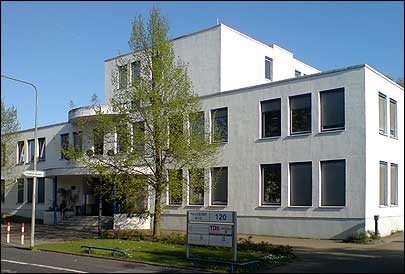With more than 320,000 items in its collection, including rare legal documents, and a variety of cataloging systems in use, such as paper card catalogs, the Max Planck Institute for European History of Law needed a new, unified asset-management system.
The institute, located in Frankfurt, Germany, recently settled on an RFID-based solution utilizing passive 13.56 MHz RFID tags that offer a 40-year lifespan—a first in the industry, according to NXP Semiconductors, which is supplying the integrated circuits (ICs) used to make the tags. The Longlife RFID labels, sold by Bibliotheca RFID Library Systems, an integrator of library RFID systems, were developed in cooperation with NXP.

“The Longlife labels provide safe and long data retention,” says library director Sigrid Amedick. The specially treated labels use a pH-neutral adhesive to attach them to historical documents, as well as to the library’s regular holdings of journals and books. This adhesive is designed not to degrade any items to which the labels might be attached.
The new, long-lasting labels are vital for the Max Planck Institute’s needs, Amedick adds, because many volumes in its library circulate only once every four to five years. Bar-coded labels have been a standard technology in libraries for years, he notes, but did not suit the institute’s requirements because they can fall off of books after years of sitting in stacks.
What’s more, under a bar-code-based system, libraries had to affix an electronic article surveillance (EAS) tag to books that would set off alarms if the assets were removed without authorization. The Longlife RFID labels provide EAS functionality, Amedick says, thereby halving the number of tags that must be affixed. The tags also come with 2048 bits of memory.“RFID is ideal for library technology,” says Harmut Marder, CEO of Bibliotheca Germany. “We have seen a 25 to 50 percent speed improvement in the internal workflow of our customers.” Tagging the Max Planck Institute library’s collection, and building the associated databases, is scheduled to begin in September of this year and will last through 2010 to 2011, Marder says. In addition, the institute plans to build a new library by 2010 that will have RFID interrogators installed throughout the building.
Each wafer-thin, credit-card-size label contains NXP’s recently launched Icode SLI-SY chip, specifically designed to ensure the long-term integrity of data burned onto the tag. The labels cost between €0.45 and €0.55 ($0.71 to $0.87) each, Marder says, and comply with the ISO 15693 RFID standard, adopted by over 2,500 libraries worldwide.
The Longlife labels are the first in the RFID industry to offer a guaranteed lifespan of 40 years, says Rainer Lutz, NXP’s marketing manager. Previously, tags typically offered an eight- to 10-year lifespan. Tests conducted by the company’s automotive division, Lutz claims, suggest the tags could retain data for as long as 100 years.
According to Lutz, the market for RFID tags for libraries will total about 200 million units in 2008, with the Longlife labels currently serving only a small portion of that total market. Eventually, he foresees additional demand for the product beyond the library segment.
“We see similar applications for museums,” Lutz states. “We see museums in Poland and the Netherlands that already use RFID tags to keep track of their collections.” Government and health archives, he says, are other segments to which the Longlife label could be applied.

